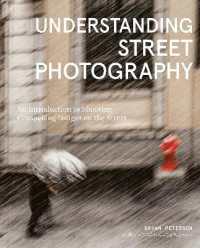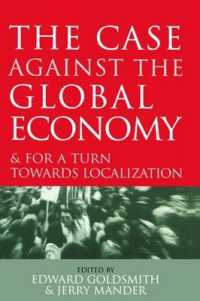Full Description
Nearly eleven million Chinese migrants live outside of China. While many of these faces of China's globalization headed for the popular Western destinations of the United States, Australia and Canada, others have been lured by the booming Asian economies. Compared with pre-1949 Chinese migrants, most are wealthier, motivated by a variety of concerns beyond economic survival and loyal to the communist regime. The reception of new Chinese migrants, however, has been less than warm in some places. In Singapore, tensions between Singaporean-Chinese and new Chinese arrivals present a puzzle: why are there tensions between ethnic Chinese settlers and new Chinese arrivals despite similarities in phenotype, ancestry and customs? Drawing on rich empirical data from ethnography and digital ethnography, Contesting Chineseness: Nationality, Class, Gender and New Chinese Migrants investigates this puzzle and details how ethnic Chinese subjects negotiate their identities in an age of contemporary Chinese migration and China's ascent.
Contents
Acknowledgements
Introduction: Contesting Chineseness
Global anxieties at China's ascent and the outflow of Chinese immigrants
The invisibilities of co-ethnic politics
Immigration and the cultural politics of being Chinese
Imagining Chinese identity
Insider, outsider and digital ethnography
Overview of the book
1 Who's Chinese?
Once a Chinese, always a Chinese
Realizing the China dream
De-Chineseness in Singapore
Re-sinicizing Singapore
Hostage to China's rise and fall
2 Not the lower classes
"We won't go overly dressed"
"I don't dare to eat their food"
"Dirty" women
Sensory disturbances, repulsion, and class
Denying cultural citizenship
Marked as a Chinese migrant
3 A better Chinese man
Hierarchy of Chinese Masculinities
"We are of low quality"
Higher sushi makes a better man
Performing Chinese masculinity
Seeking solace on WeChat
Reimagining the better Chinese man
4 When a Chinese does not speak Chinese
Chineseness as Mandarin
Other ways to be Chinese
Fragmenting identities
My Chinese culture is better than your Chinese culture
Civilizational or national belonging?
Regulating the internet
Sanitized Chineseness
5 In the new Chinatown
Racialization and the politics of place
The original Chinatown and the European imaginary
Geylang: The new Chinatown
The media's complicity
Chinese migrants react: Self Orientalisation
Locals' displacement
Two Chinatowns, two imaginaries of Chineseness
Conclusion: A hierarchy of Chineseness
Coconstitution of China and Singapore's Chineseness
Enduring Chineseness
Index








